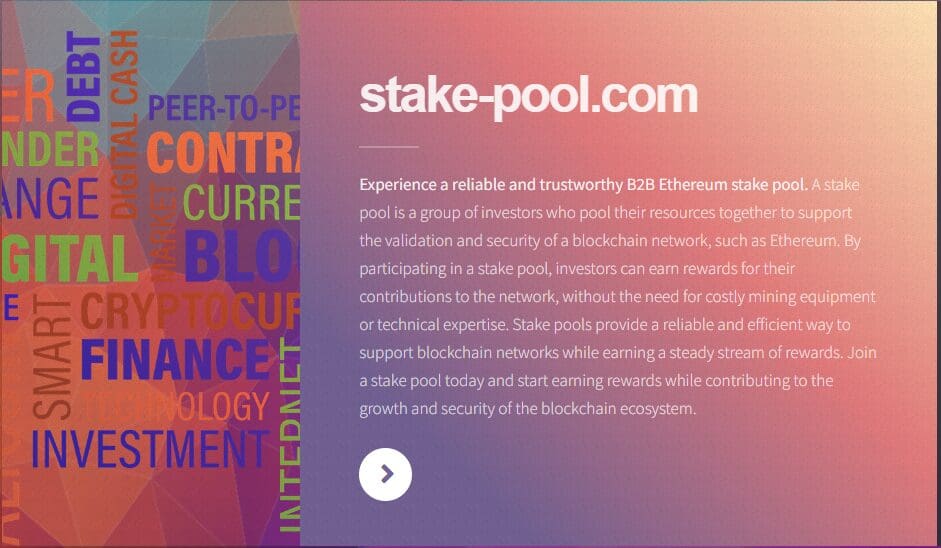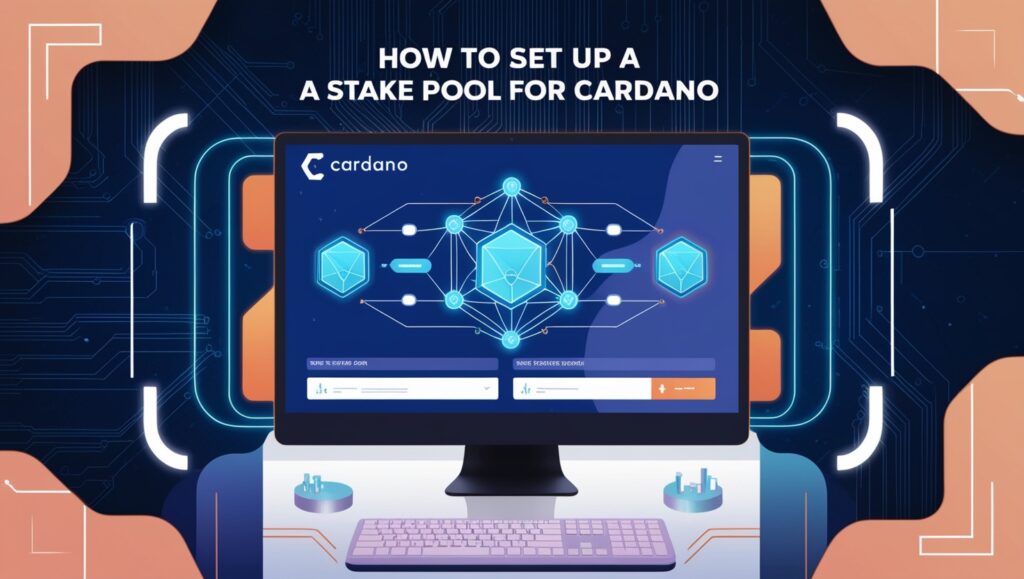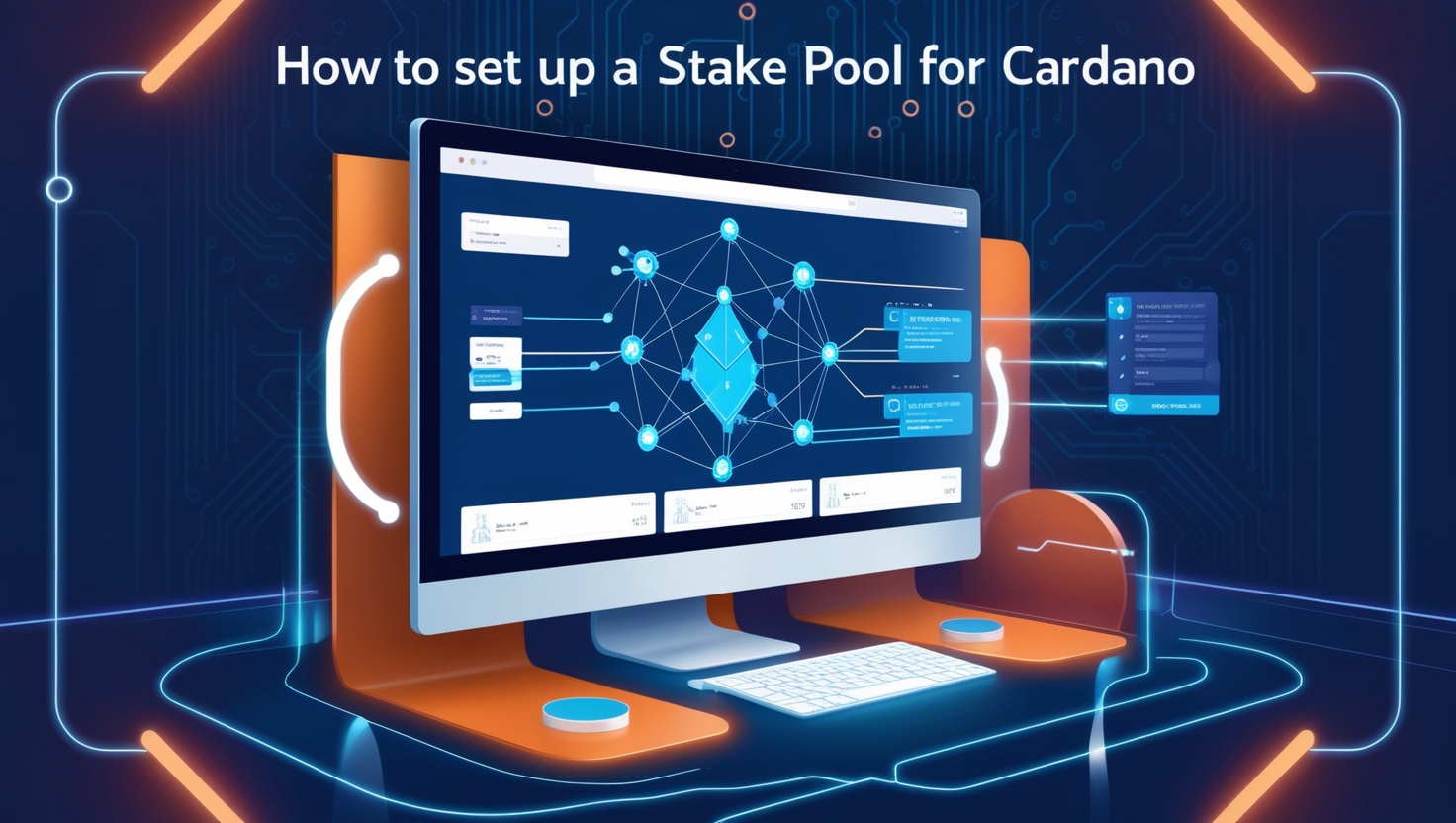In this article i will Discuss the How To Setting Up A Stake Pool For Cardano, which is great for users who wish to play a part in the decentralization of Cardano blockchain while simultaneously receiving rewards.
To set up a stake pool, one has to provide the right set up, put the appropriate program, and register the pool with the Cardano network.
I will take you step by step on how to choose the best hardware and other operational necessities to make sure that your stake pool is safe, effective, competitive, and fetches prospective delegators.
What is a Stake Pool?
A stake pool is a form of network node that is used in Proof of Stake (PoS) blockchains which validates transactions and generates new blocks from multiple stakeholders.
Whereas, in PoW systems, participants mine, in PoS systems participants delegate their cryptocurrency to a stake pool which increases its chances of being selected to validate transactions and subsequently earn rewards.

By combining resources, stake pools increase blockchain security, decentralization, and efficiency, allowing users without the necessary resources or technical know-how to manage their own validating node to participate easily.
How To Setting Up A Stake Pool For Cardano?

The process of setting up a stake pool for Cardano requires completing various steps. This is what you need to do.
Prepare Your Environment
Get a server that has a minimum of 8 GB RAM, a public IP address, and a network resource with 1 GB bandwidth per hour. Also, install some version of Linux on your server and ensure you understand server management.
Install Cardano Node
You will need to install Cardano node on your server, which requires following the instructions on the official website. You will define your block producer and relay nodes in this step as well.
Generate Keys and Certificates
For your stake pool, create the required keys and certificates: staking key, payment key, and pool registration certificate.
Register Your Stake Pool
To register your stake pool, submit your pool registration certificate to Cardano blockchain. This is done by making a transaction to the blockchain while adding your pool metadata.
Configure and Monitor Your Nodes
Start a communication between your nodes and Cardano network. Use gLiveView or other alternatives to monitor the condition of your nodes.
Promote Your Stake Pool
Create social media accounts as well as posts in forums to share information about your pool, so that Cardano users can become your delegates.
Marketing and Delegation Strategies
Both technical outreach and community involvement are necessary for marketing your Cardano stake pool, and attracting new delegators. Here are some suggestions that can assist you:
Pool Website & Branding
Design an attractive website highlighting your pool: fees, mission statement, and most importantly pledge amount and rewards structuring details.
Added elements to quote from the recently mentioned site platform. Don’t forget to add your branding, logo, tagline, and pool name.
Add in depth FAQs and guides so that prospective delegators understand the process of staking better.
Social Media & Community Engagement
Market and advertise your pool on social plasforms like Twitter, Reddit, and Telegram.
Be an active member of Cardano forums, groups, and servers on discord. Ensure you take an active part in various discussions and provide insights related to and for promoting your pool.
Make frequent posts regarding the pool’s performance, latest reward distributions, and the new features that are coming in.
Pool Listings & Directories
Submit your pool to sites like ADAPools, PoolTool, and Cardano Pool Watch. These sites make it easy for delegators to discover new pools with credible patrons.
Make sure to always have your pool’s APY alongside the performance metrics set to visible and with the most recent updates.
Incentive Programs
Provide first few delegators with bonus rewards or allow existing delegators to get bonuses for adding even more new delegators in.
Staking tutorials and AMA sessions are good examples of events that can be done to ensure there is increased trust and awareness.
Reward Sharing & Delegation Strategy
Focus on smaller delegates first as they are willing to stake but not yet able to operate their own pools.
To build confidence ensure your pool has low margin, low fees, and strong pledge.
Give up-to-date information on the pool’s performance and ensure there are reports on rewards and other important information all the time.
Collaborations & Partnerships
Work together with other projects or pools on the Cardano ecosystem because It helps to cross-advertise and attract additional delegates.
Engage in partnerships with influencers and ambassadors from Cardano, so they will advertise your pool within the Cardano community.
Transparency & Community Trust
Provide up-to-date and active delegates with the block production scale, rewards distribution metrix, and other relevant reports.
Provide proper financial reports of fee pledges and usage so as to foster trust from delegates concerning the operations of the pool.
Your pool can attract delegates looking for low risk high return ideal performance and dependable leadership by merging technical trustworthiness with community involvement.
Challenges and Troubleshooting
Establishing a Stake Pool for Cardano comes with various issues and processes for troubleshooting. Below are some of the issues, possible solutions and everything in between!
Challenges
Technical Complexity: The creation and ongoing maintenance of a stake pool requires an advanced level of knowledge about Operating systems, server configurations, and connections.
Security: One must secure the stake pool at all costs. This means safeguarding your keys, locking down your server, and putting your software through updates frequently.
Performance: Uptime and performance needs to be continuously high, otherwise rewards will not be given. This means that nodes need to be checked constantly to guarantee their online status and pairing with networks.
Competition: Drawing in delegated users towards the stake pool is not an easy task especially when other pools are in the sphere.
Troubleshooting
Node Synchronization Issues: If node is having an issue synchronizing with the network, please check the internet access provided, firewall arrangement, and confirm that configuration files are accurate.
Low Performance: In case the resource system of the server for the pool is not on par, keep track of the server’s used resources (CPU, RAM, Bandwidth) and your setting. Make sure that the nodes are not forced to perform over their limit and that there is enough room for scaling in hardware.
Security Violations: Ensure that your software is kept up to date, and regularly follow good procedures to protect your server. Create complex passwords, use two-factor authentication, and keep your authentication keys in an offline vault.
Recruiting Delegators: Advertise your stake pool on social media platforms, community forums, and local gatherings. Focus on the exceptional features and performance of your pool in order to garner more delegates.
Conclusion
Unlike other cryptocurrencies, Cardano comes with its own unique hurdles. To set up a stake pool, one must manage all aspects ranging from infrastructure maintenance, ensuring minimal downtime, and installing the correct software.
This will enable you to register your pool for stake. Another hurdle would be marketing, which in this case would mean enticing delegators to your pool. Carving out a reputable identity means making sure there are no issues with block production.
Furthermore, in order to maintain a sustainable stake pool, it is pivotal to stay updated with network security and upcoming changes. All of these steps ensure that the Cardano network is further decentralized while the users also reap their benefits.










